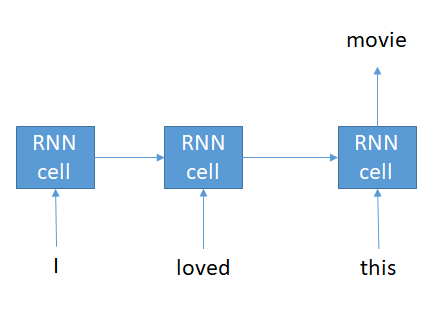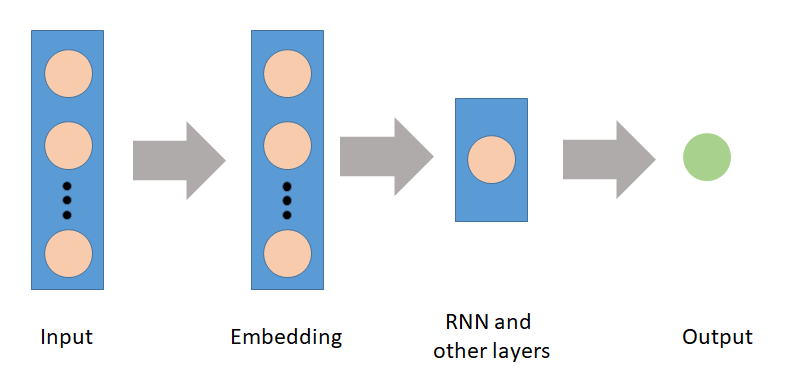Introduction to language models
Recurrent Neural Networks (RNNs) for Language Modeling with Keras

David Cecchini
Data Scientist
Sentence probability
Many available models
- Probability of "I loved this movie".
- Unigram
- $$P(\text{sentence}) = P(\text{I})P(\text{loved})P(\text{this})P(\text{movie})$$
- N-gram
- N = 2 (bigram): $$P(\text{sentence}) = P(\text{I})P(\text{loved} | \text{I})P(\text{this} | \text{loved})P(\text{movie} | \text{this})$$
- N = 3 (trigram): $$P(\text{sentence}) = P(\text{I})P(\text{loved} | \text{I})P(\text{this} | \text{I loved})P(\text{movie} | \text{loved this})$$
Sentence probability (cont.)
- Skip gram
- $$P(\text{sentence}) = P(\text{context of I} | \text{I})P(\text{context of loved} | \text{loved}) \ $$ $$P(\text{context of this} | \text{this})P(\text{context of movie} | \text{movie})$$
- Neural Networks
- The probability of the sentence is given by a
softmaxfunction on the output layer of the network
- The probability of the sentence is given by a
Link to RNNs
Language models are everywhere in RNNs!
- The network itself

Link to RNN (cont.)
- Embedding layer

Building vocabulary dictionaries
# Get unique words
unique_words = list(set(text.split(' ')))
# Create dictionary: word is key, index is value
word_to_index = {k:v for (v,k) in enumerate(unique_words)}
# Create dictionary: index is key, word is value
index_to_word = {k:v for (k,v) in enumerate(unique_words)}
Preprocessing input
# Initialize variables X and y X = [] y = []# Loop over the text: length `sentence_size` per time with step equal to `step` for i in range(0, len(text) - sentence_size, step):X.append(text[i:i + sentence_size]) y.append(text[i + sentence_size])
# Example (numbers are numerical indexes of vocabulary):
# Sentence is: "i loved this movie" -> (["i", "loved", "this"], "movie")
X[0],y[0] = ([10, 444, 11], 17)
Transforming new texts
# Create list to keep the sentences of indexes new_text_split = []# Loop and get the indexes from dictionary for sentence in new_text:sent_split = []for wd in sentence.split(' '):ix = wd_to_index[wd]sent_split.append(ix)new_text_split.append(sent_split)
Let's practice!
Recurrent Neural Networks (RNNs) for Language Modeling with Keras

